Exceptional museum collections are the foundation of the public life of art at Yale, but the university’s commitment to art as a public trust does not end at the museum door. From the Old Campus to Science Hill, from Branford College to Memorial Hall, works of art sited in courtyards or plazas, lobbies or lecture halls, inspire reflection and offer aesthetic pleasure. Hallmarks of the remarkable cultural life of this institution, they lend a public face to Yale’s educational mission. The much beloved statue of Revolutionary War hero Nathan Hale, Claes Oldenburg’s pop art icon Lipstick (Ascending) on Caterpillar Tracks, and Maya Lin’s The Women’s Table are but three of the many treasures visible around the campus.
Browse Gallery
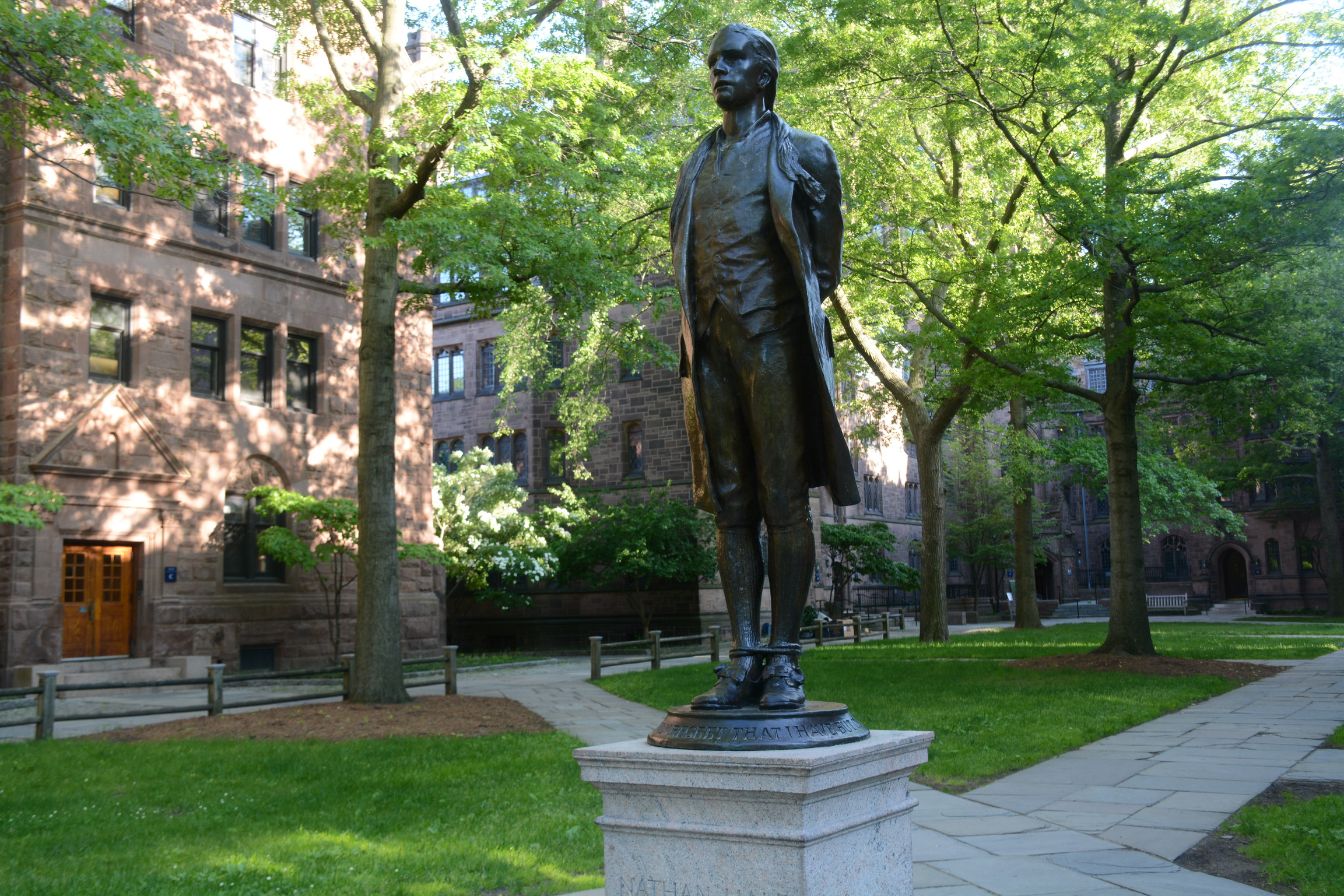
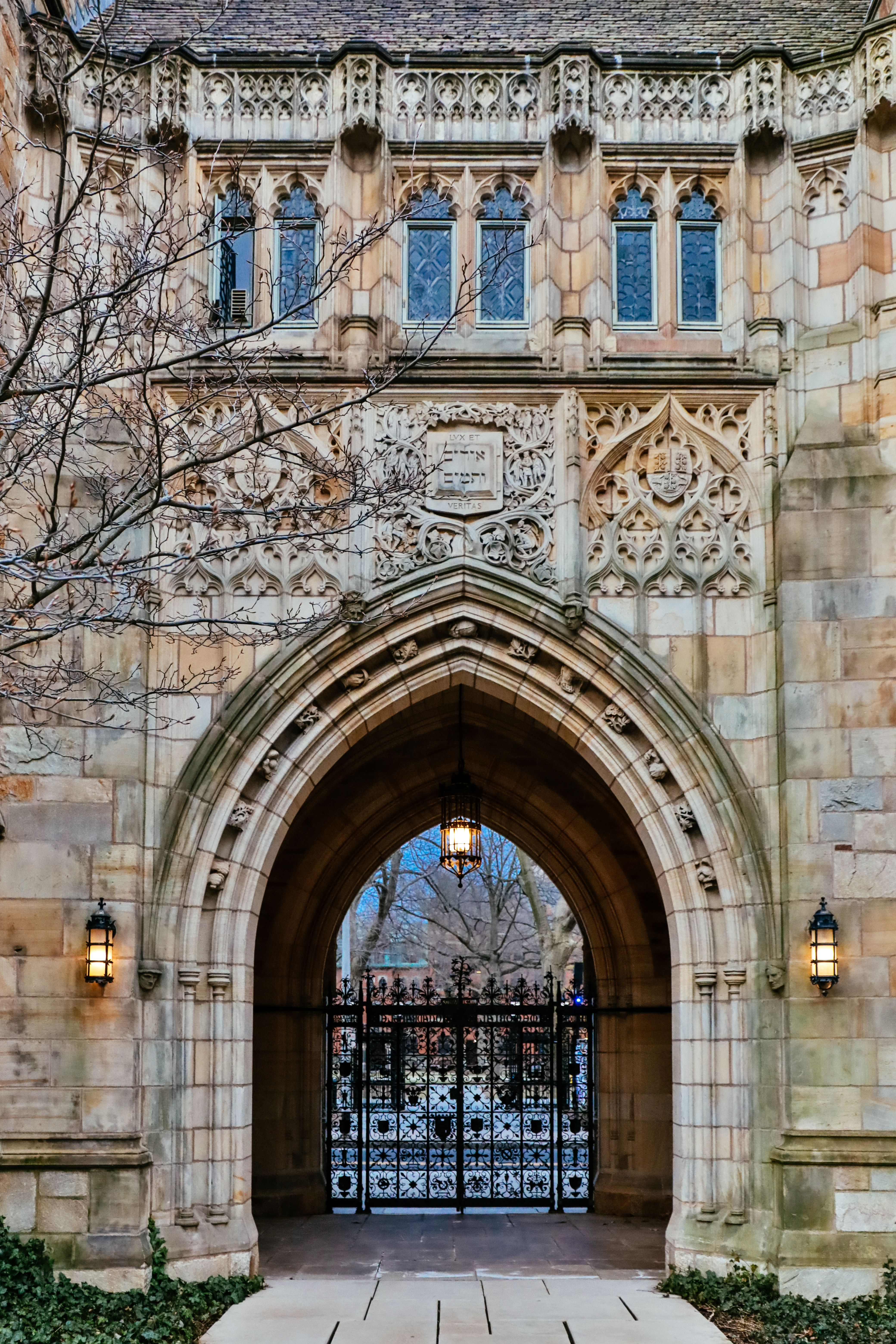
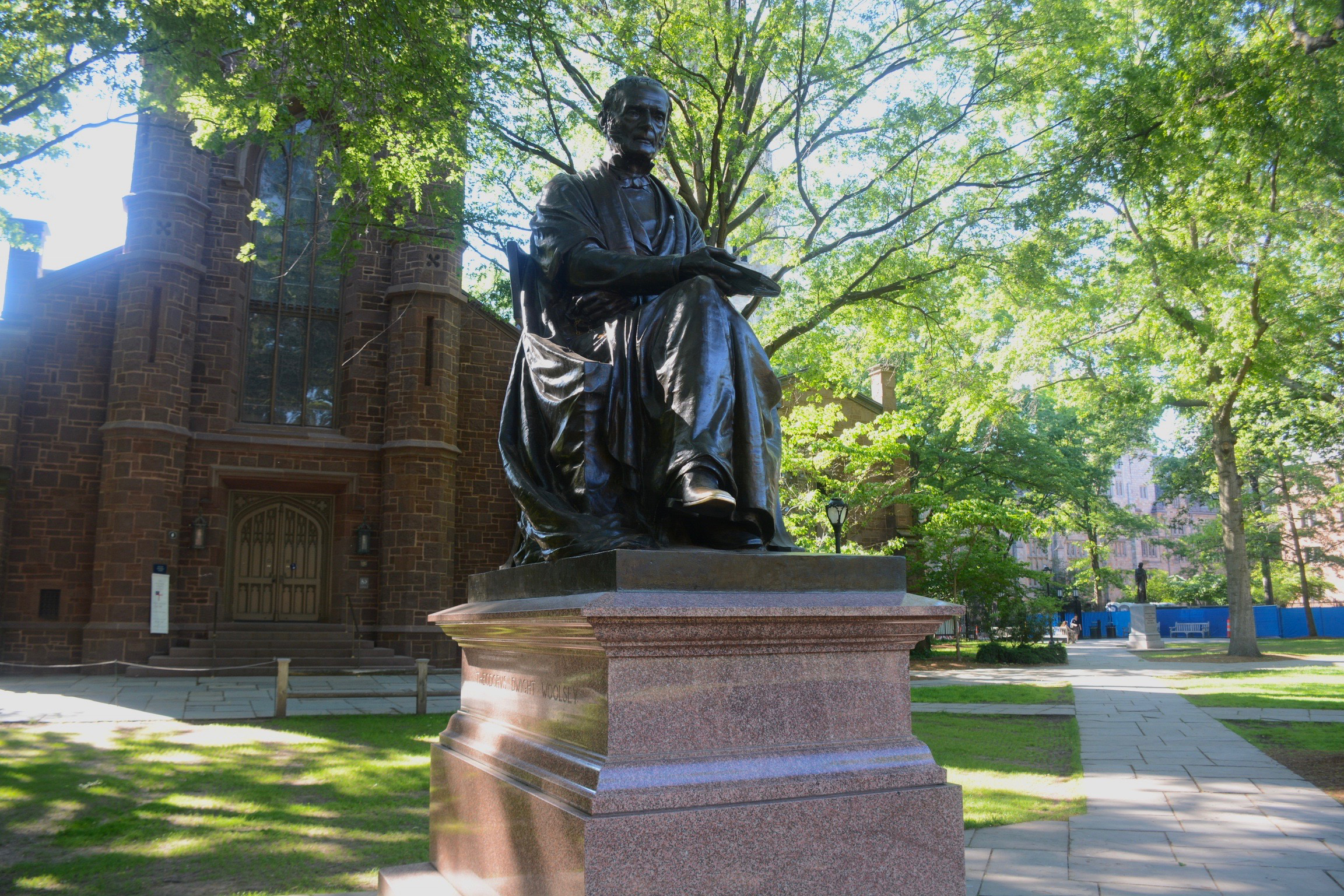
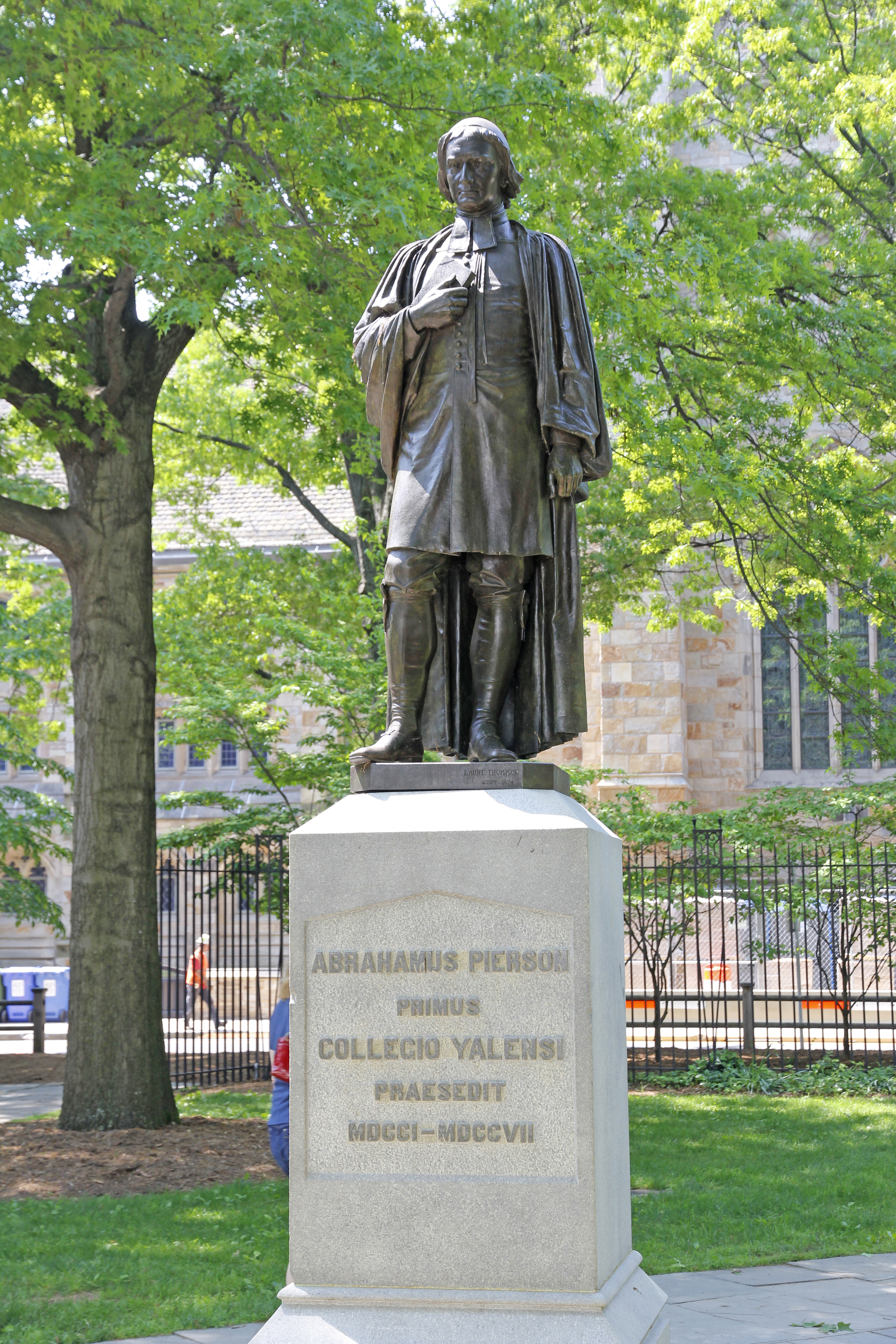
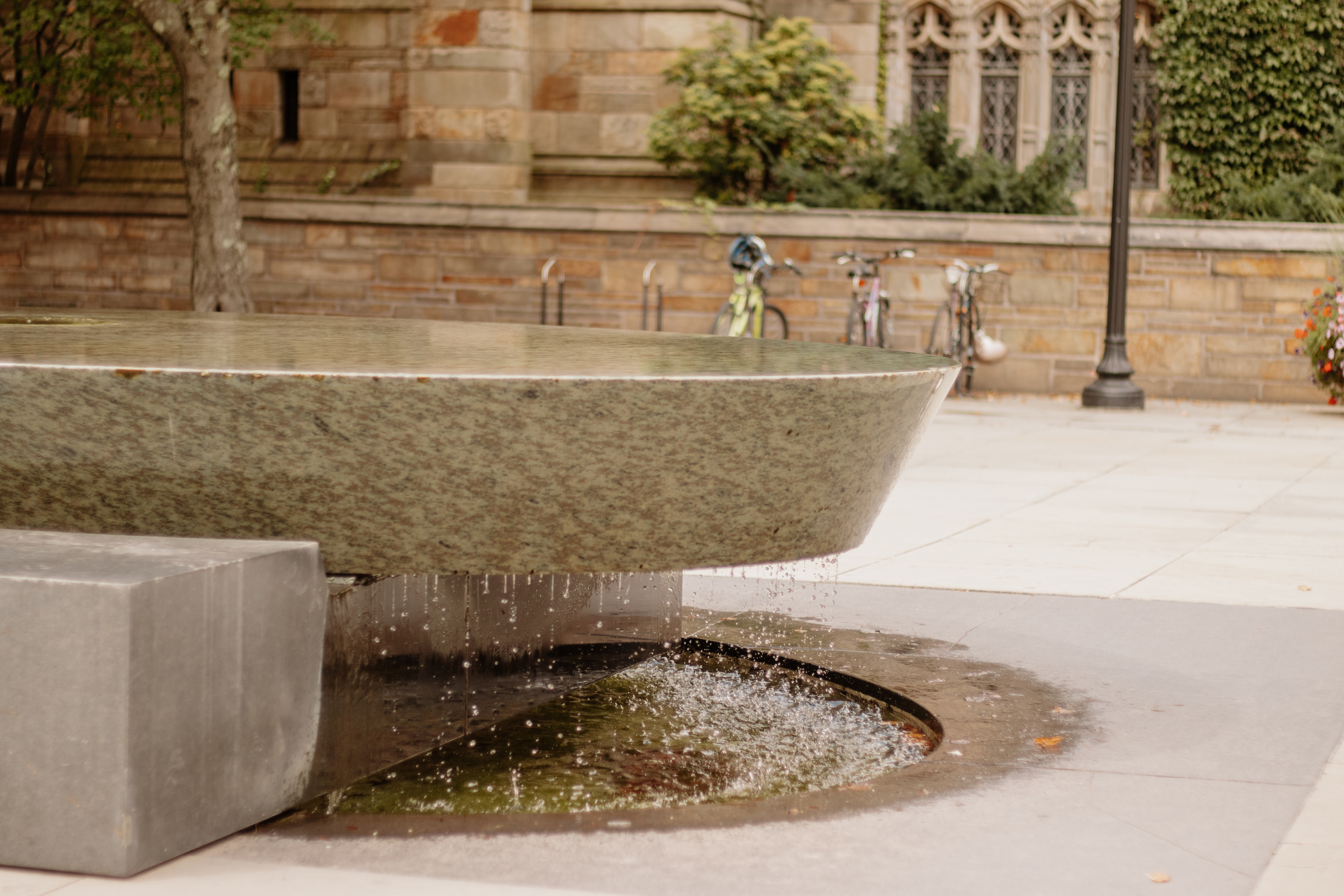
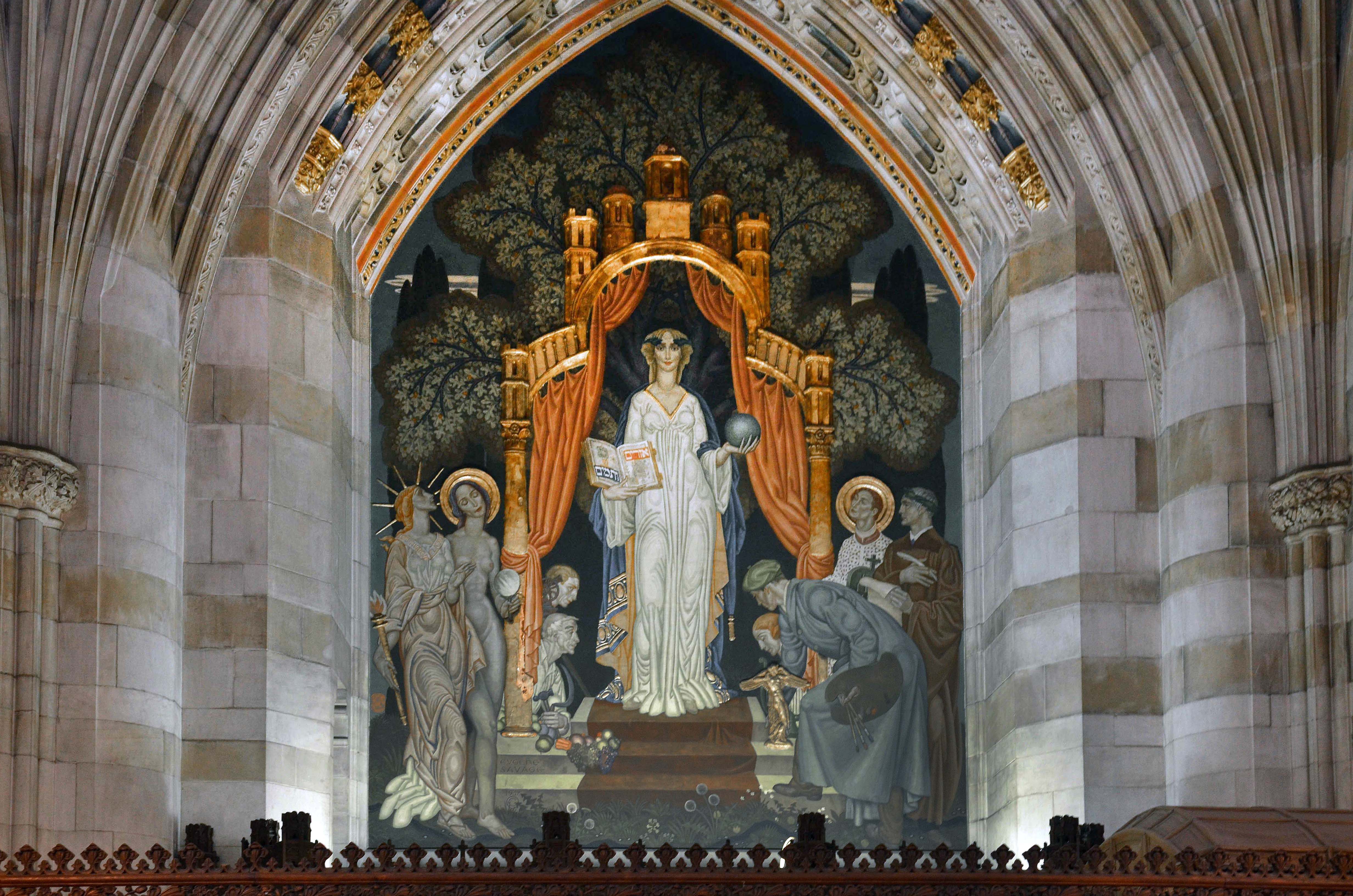
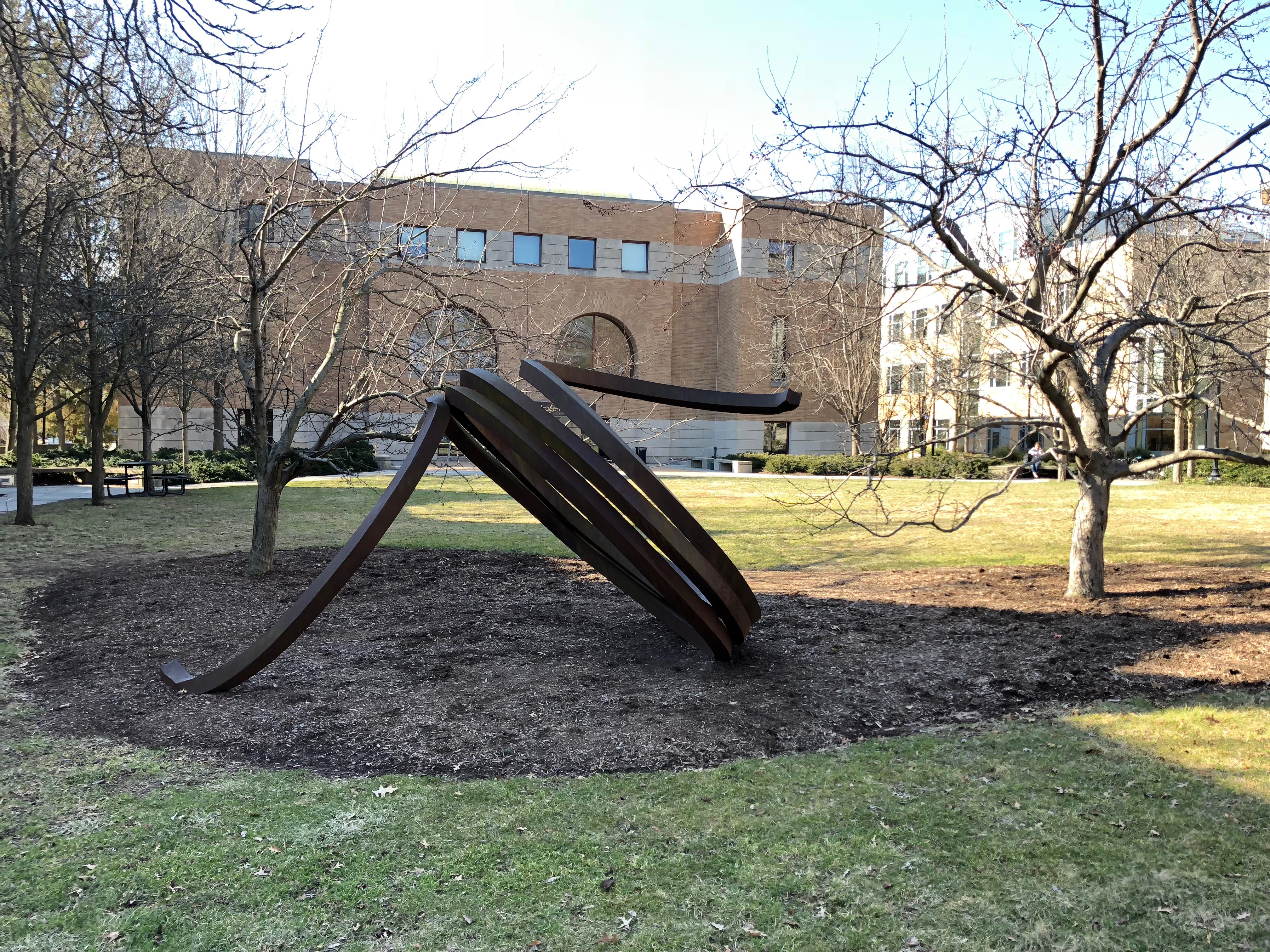
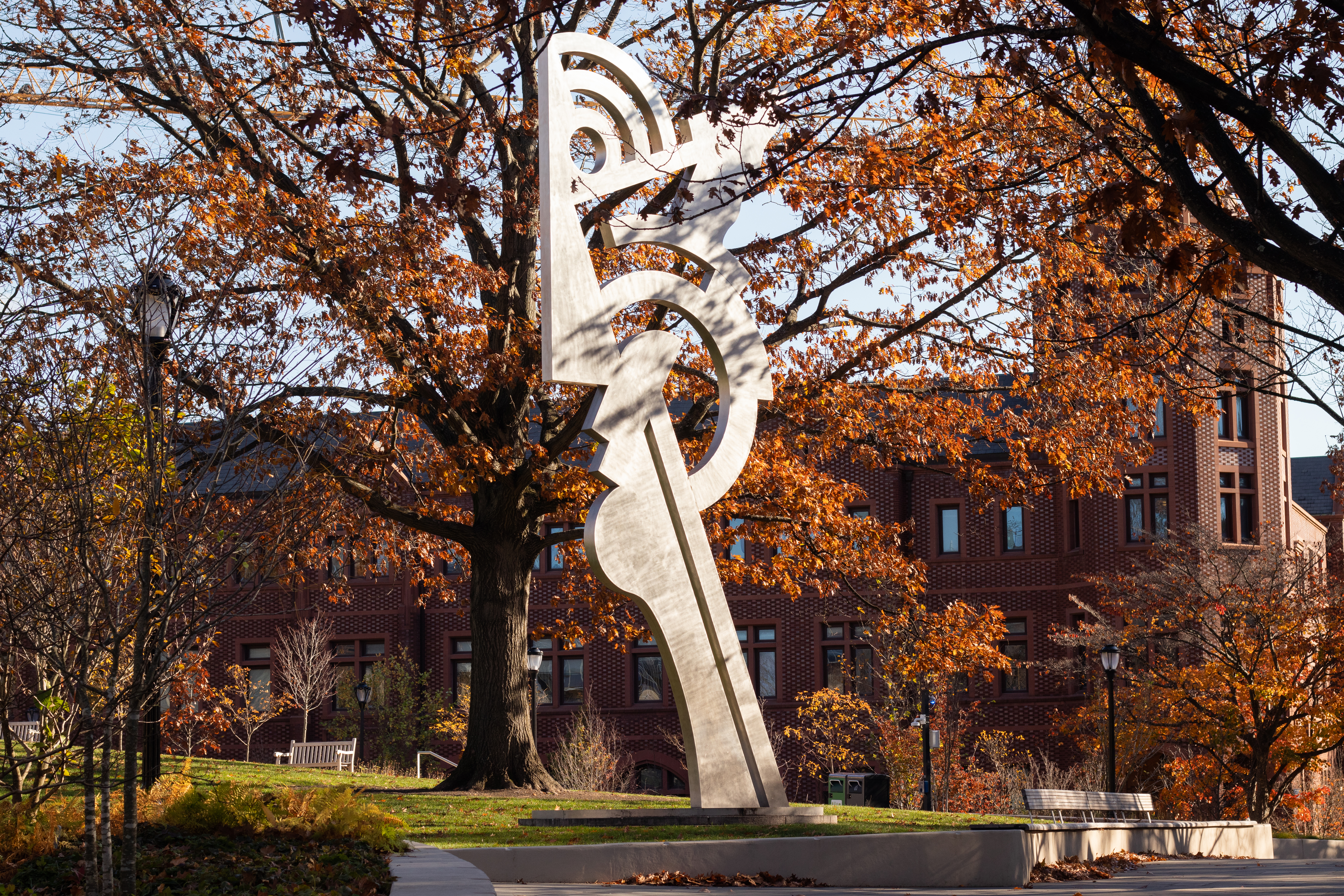
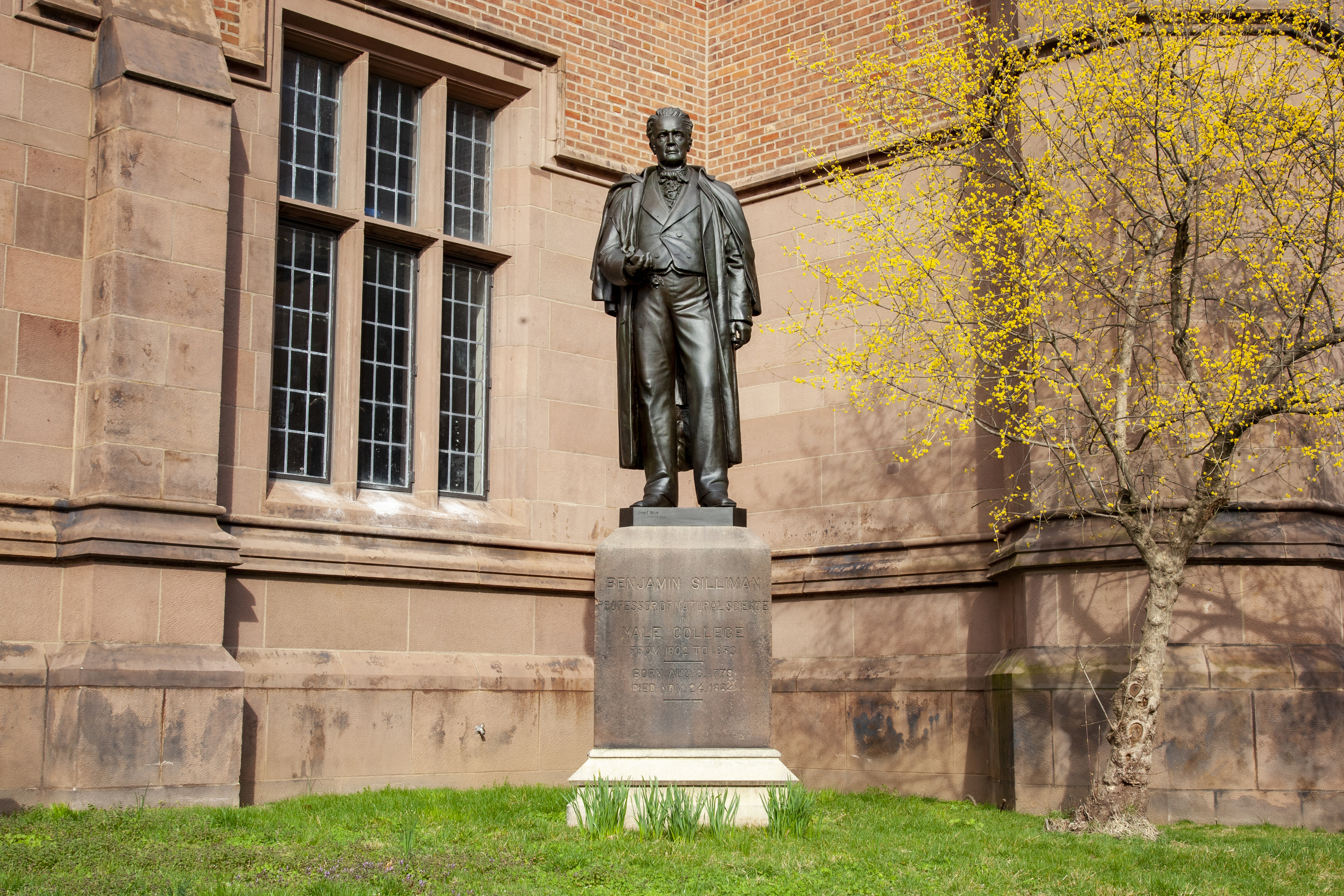
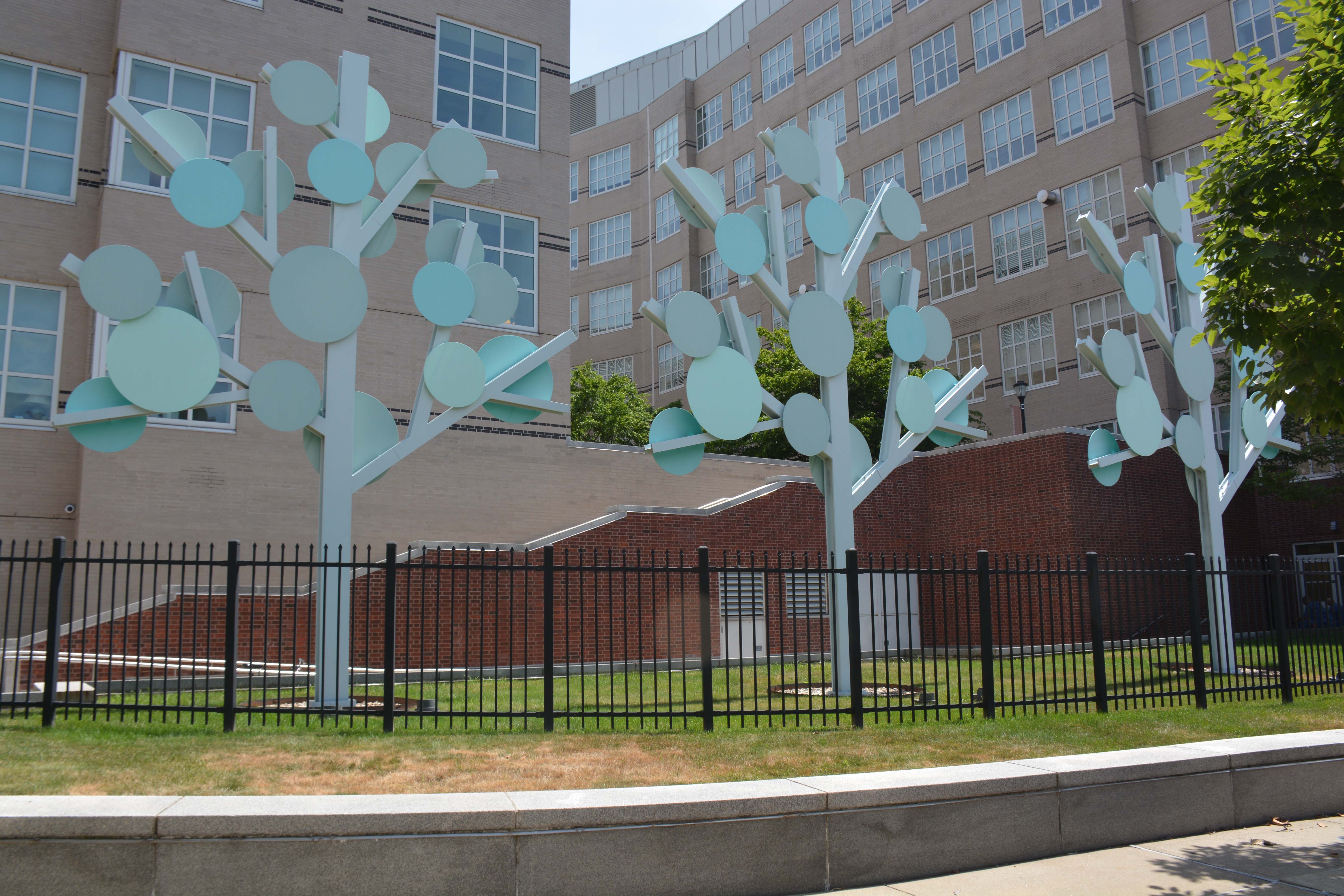
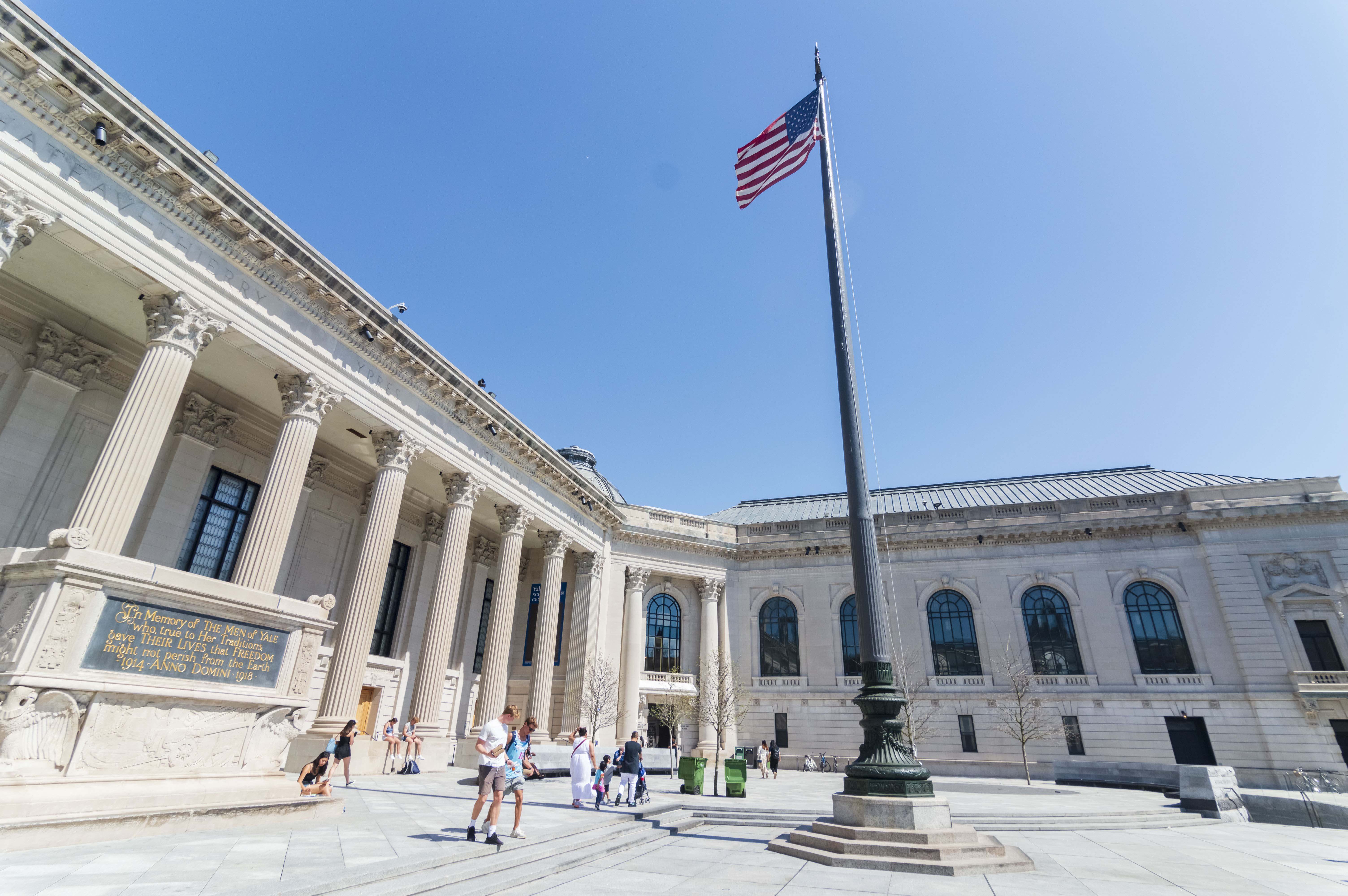
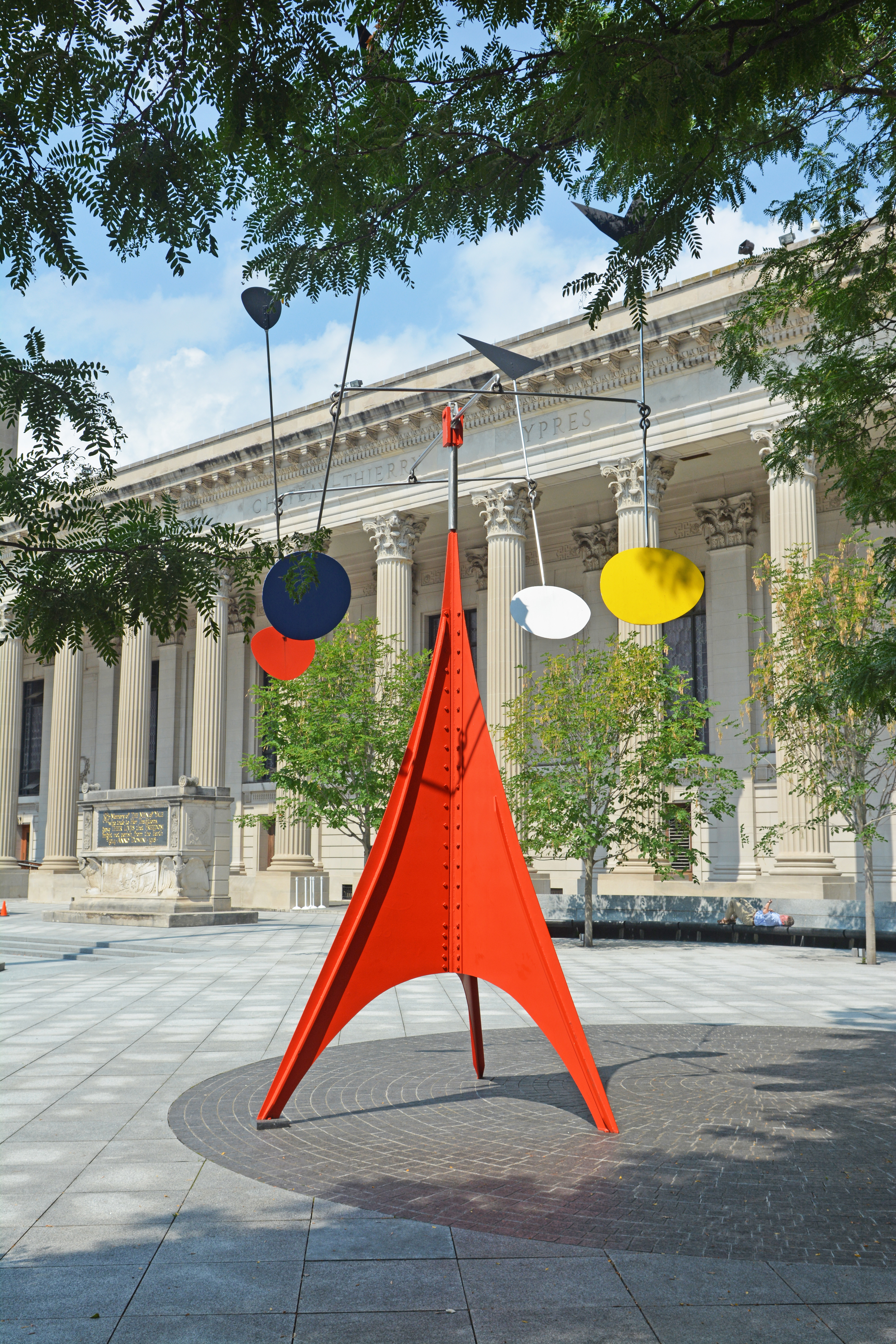
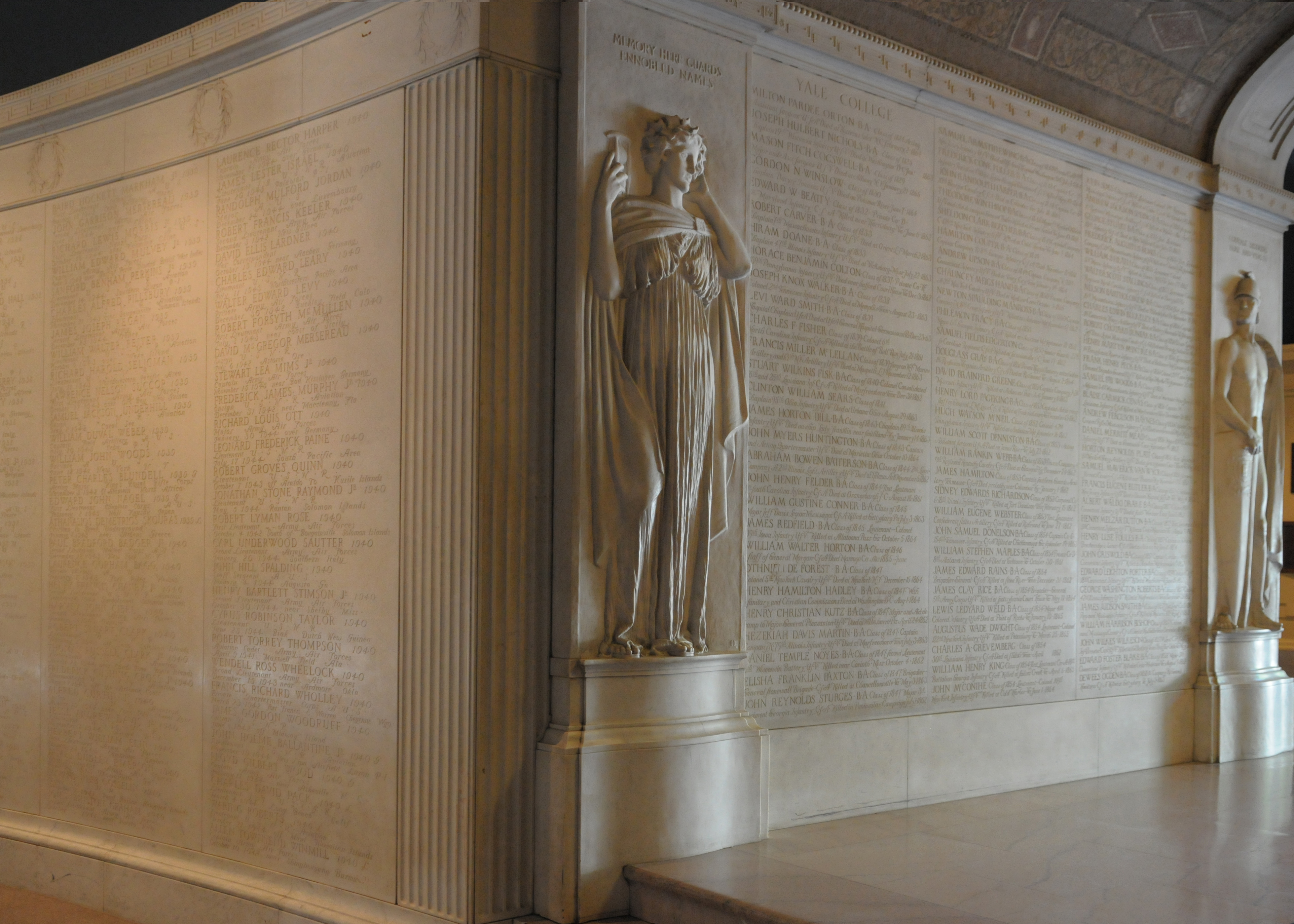
Nathan Hale, 1913
Architect: Bela Lyon Pratt (1867-1917, B.F.A. 1899)
Location: Old Campus
An idealized bronze statue honors the heroism of Yale College graduate Nathan Hale (1755-1776; B.A. 1773, M.A. 1776), a young schoolteacher captured and executed by the British during the American Revolution. Hale’s youth and defiant last words, inscribed on the statue’s base, made him a national hero, and his legend remained powerful over a century after his death when alumni donated this monument. Unable to afford the renowned Gilded Age sculptor Augustus Saint-Gaudens, they commissioned the piece from his former assistant, Bela Pratt, who had studied at the Yale School of the Fine Arts under John Ferguson Weir. Combining dignity and beauty with a traditional martyr pose, Pratt’s statue stands beside Connecticut Hall, where Hale lived as a student.
A gift to Yale College by graduates and friends, 1914
Memorial Quadrangle Gate, 1918-22
Architect: Samuel Yellin (1885-1940)
Location: High Street, at Harkness Tower
Samuel Yellin was a master craftsman known for designing works of art out of a single piece of iron, instead of tacking pieces together. Yale has ten hand-forged gates by Yellin—as well as numerous examples of decorative ironwork, from door handles and hinges to radiator grilles—the majority of them on buildings designed by James Gamble Rogers. The most spectacular is the wrought iron gate of the Memorial Quadrangle, forged at Yellin’s metalworking shop in Philadelphia. It is divided into panels that contain shields, helmets, soldiers, weapons, and the crests of the five branches of the armed services.
Gift of Mrs. Stephen V. Harkness
Theodore Dwight Woolsey, 1896
Architect: John Ferguson Weir (1841-1926; M.A.H. 1871)
Location: Old Campus
During his long tenure as president of Yale from 1846 to 1871, Theodore Dwight Woolsey (1801-1889; B.A. 1820, M.A. 1823) oversaw the creation of the Yale School of the Fine Arts and hired John Ferguson Weir as its first director in 1869. On its low pedestal in the middle of Old Campus, Weir’s massive bronze statue of Woolsey has a forceful presence, serving as both a memorial and a symbol of learning and wisdom. The sculptor emphasized Woolsey’s academic career as a former professor of Greek by seating him on a Greek Revival klismos chair wearing heavy classicized robes; the Greek inscription on the back of the chair reads “the most excellent, the most wise, the most just.” The enormous head conveys the “scholarly features and piercing eye” that Weir recalled vividly from their first meeting, and generations of students have rubbed the protruding foot for good luck. The art professor created the statue as a gift from alumni, and today it illustrates the joint roles of Weir and Woolsey as founders of Yale’s rich artistic tradition.
Anonymous alumni gift, 1896
Abraham Pierson, 1874
Architect: Launt Thompson (1833-1894; M.A.H. 1874)
Location: Old Campus
Civic pride inspired towns across the nation to build Civil War memorials in the 1870s, making large-scale public sculpture a permanent feature in the American landscape. Yale joined this trend in 1874 with a bronze statue honoring Abraham Pierson (1641/5-1707), the college’s first rector (or president) from 1701 to 1707. Lacking a likeness of Pierson, Irish-born sculptor Launt Thompson used portraits of the rector’s descendants to compose an idealized face. The Shakespearean actor Edwin Booth may have posed for the work, lending it all the dignity and force that made Booth’s portrayals of Hamlet famous on the stages of New York and London.
Gift of Charles Morgan to Yale University, 1874
The Women’s Table, 1993
Architect: Maya Lin (b. 1959; B.A. 1981, M.Arch. 1986, D.F.A. 1987)
Location: Rose Walk, by Sterling Memorial Library
Maya Lin’s monument-making began during her undergraduate years at Yale, with her 1981 design for the Vietnam Veterans Memorial in Washington, D.C. Like the black wall of names cutting into the grassy Mall, the simple granite blocks of Lin’s Women’s Table organically emerge from the pavement as both a lament and a tribute. A string of figures marks the number of female students at Yale each year since its founding in 1701. These numbers grow with time as they spiral out toward the table’s edge, swelling like the rings of water that bubble from the central spring and spill over on all sides.
Anonymous gift, commissioned in 1989 and installed in 1993
Alma Mater, 1932
Architect: Eugene Francis Savage (1883-1978; B.F.A. 1924)
Location: Sterling Memorial Library
Amid the tumultuous artistic revolutions of the early twentieth century, Eugene Savage remained an advocate of continuity, tradition, and a scholarly model of art-making. Trained in Rome and at the Yale School of the Fine Arts, he later returned to Yale as decorator of the newly built Sterling Memorial Library and as a professor of painting, serving on the faculty for twenty-eight years. Like his Latin American contemporaries Diego Rivera and José Clemente Orozco, Savage created murals in the 1930s as powerful public statements, but his large-scale works contain not political but academic messages, commending settings like the libraries of Columbia and Yale to elite and studious audiences. The central figure in Alma Mater thus embodies the University by dressing in the school colors and holding a book bearing Yale’s motto, “Lux et Veritas.” She stands under the tree of knowledge, and allegorical figures of Light, Truth, Science, Labor, Music, Divinity, Literature, and the Arts pay her homage.
John W. Sterling, B.A. 1864, Bequest
Indeterminate Line, 1994
Architect: Bernar Venet (b. 1941)
Location: 34 Hillhouse Avenue, by Luce Hall
Bernar Venet created numerous Indeterminate Line works in the 1980s and 1990s by bending and twisting long square rods of steel with an overhead crane. Despite this unvarying method, these sculptures are symbols of individuality and freedom. The irregularities of the coil illustrate the weight and strength of the steel itself as it resisted the artist’s control, thereby defining artistic creation as cooperation between man and material. Venet’s early work in the 1960s explored the impersonal laws of physics and math to liberate art from aesthetic rules. This later piece grants the object independence in a new way by interpreting the imperfections in its graceful steel curves as moments of vitality and nonconformity to logical ideals.
Gift of Marion J. Lebworth, B.A. 1948, in honor of Henry Luce III, B.A. 1945W
Modern Head, 1974/1989
Architect: Roy Lichtenstein (1923-1997)
Location: Sachem Street at Hillhouse Avenue, below Science Hill
Crowning Hillhouse Avenue at the base of Science Hill stands Roy Lichtenstein’s Modern Head, a thirty-one-foot-tall stainless steel silhouette. Famous for his 1960s pop art paintings, which imitated the printed look of comic books, Lichtenstein often used his work to poke fun at existing trends in modern art. Translating the forceful brushstrokes of 1950s abstract expressionism into frozen comic book style allowed the artist to gently imply that such paintings had become familiar, formulaic, and meaningless. Similarly, Modern Head targets the mechanized style of purist painters like Fernand Léger, a bold look when introduced around 1920. Reproducing it in exaggerated scale with flashy, futuristic materials, Lichtenstein questioned this outdated, dehumanizing aesthetic’s continued domination of the definition of “modern” in the 1970s and 1980s.
To commemorate the inauguration of Richard C. Levin, Ph.D. 1974, presented to Yale University in 1993 by Jeffrey H. Loria, B.A. 1962, and James Goodman
Benjamin Silliman, Sr., 1881-84
Architect: John Ferguson Weir (1841-1926; M.A.H. 1871)
Location: Sterling Chemistry Laboratory, facing Prospect Street
Although this statue’s plaque and current location on Science Hill honor Benjamin Silliman, Sr. (1779-1864; B.A. 1796, M.A. 1799) as a pioneering professor of chemistry and natural history, its original viewers would have equally remembered Silliman for his passion for the visual arts. In addition to helping found the School of Medicine and the Sheffield Scientific School, Silliman brokered Yale’s acquisition of John Trumbull’s collection of paintings in 1832, thereby creating America’s first university art gallery, which he curated until his death in 1864. The portly eight-foot bronze figure of Silliman, shown lecturing on a crystal held in his right hand, is the first sculptural work by Yale School of the Fine Arts director John Ferguson Weir, a well-known painter of industrial scenes who learned to work in three dimensions specifically for this project.
Gift of the friends and students of the sitter, 1884
Trees, 2000-03
Architect: Robert Venturi (b. 1925; D.F.A. 1979) for Venturi, Scott Brown & Associates, Inc.
Location: Anlyan Center
Trees flanks the west side of the Anlyan Center along Howard Avenue, serving as a colorful mediator between the massive School of Medicine research facility and the adjacent “Hill” residential neighborhood. For architect Robert Venturi, these twenty-five-foot-tall artificially evergreen objects form a carefully planned playful moment, a whimsical touch tempering the functional simplicity of his otherwise unadorned brick and limestone complex. In keeping with the postmodern style that Venturi developed in the late 1960s, the clusters of aluminum circles signify his rejection of the rigid formalism of Eero Saarinen, Louis Kahn, and others under whom he trained. Preserving the vernacular traditions and human qualities of built spaces, his work embraces context and community.
Ledyard Flagstaff, 1908
Architect: John Carrère (1858-1911) and Thomas Hastings (1860-1929) Yale Alumni War Memorial, 1926-27 Thomas Hastings and Everett V. Meeks (1879-1954)
Location: Hewitt University Quadrangle (Beinecke Plaza)
After winning the design competition for the New York Public Library in 1897, the prominent architectural firm of Carrère & Hastings employed a similar French-inspired Beaux-Arts style for Yale’s Bicentennial Buildings (Memorial Hall, Commons, and Woolsey Hall), completed in 1901. The firm embellished this complex in 1908 with the Ledyard Flagstaff, given in memory of a young alumnus killed in the Spanish-American War. Hastings again amended the space two decades later, collaborating with Yale School of the Fine Arts Dean Everett V. Meeks on a World War I memorial cenotaph and Corinthian colonnade with battle names across its entablature. The stylized Art Deco carvings on the sandstone and slate altar to liberty include eagles and ornamental garlands like those on the flagpole, here interwoven with tanks, guns, and other elements of modern technological warfare.
Flagstaff: Erected by members of the Class of 1898.
War Memorial: Erected by the graduates of Yale University
Gallows and Lollipops, 1960
Architect: Alexander Calder (1898-1976)
Location: Hewitt University Quadrangle (Beinecke Plaza)
The moving parts of Alexander Calder’s kinetic sculptures decorate and energize public spaces across the world. As the painted steel plates of Gallows and Lollipops hover and seesaw around the tip of their red tripod base, they obey chance atmospheric stimuli to destabilize the grid of Beinecke Plaza. Developed in the 1930s, the mobile became Calder’s trademark, combining influences from the avant-garde artists of prewar Paris. While his primary colors follow the purist palette of Piet Mondrian, the animated geometric shapes resemble the abstracted objects and animals in the surrealist paintings of Joan Miró and Paul Klee. This work’s title converts the swaying arms into images both delightful and unsettling, suggesting the endless flux and precarious balance of forces at work within the unconscious mind.
Anonymous gift, 1975
Peace, Devotion, Memory, and Courage, 1913
Architect: Henry Hering (1874-1949)
Location: Memorial Hall
Henry Hering’s four allegorical sculptures punctuate the progression of names inscribed in the marble walls of Memorial Hall. Guarding a history of sacrifice in war by Yale graduates, these figures carved in high relief recall antique funerary statues to declare the timelessness of this mausoleum-like space. Dynamic crevices and profound shadows temper the rigid austerity of the cold marble bodies, connecting this monument stylistically to the work of Hering’s mentor, the celebrated turn-of-the-century American sculptor Augustus Saint-Gaudens. The contrast of rippling drapery against smooth stone skin repeats the texture of neoclassical architecture, inviting touch and further integrating the vertical quartet, like fluted columns, into their built environment.
Dedicated by the University to the men of Yale who gave their lives in the Civil War.
Yale’s commitment to art as a public trust has a compelling history that reflects America’s heritage and notes the shifting tides in our cultural values.
The earliest work on campus honors Abraham Pierson, Yale’s first president (1701–1707). It was completed in 1874 by Launt Thompson and sited on what is now Old Campus, where it continues to preside to this day. The much beloved statue of Revolutionary War hero Nathan Hale, by Yale School of the Fine Arts alumnus Bela Lyon Pratt, furthered Yale’s tradition of the public monument as a source of civic pride. The statue stands beside Connecticut Hall, where Hale lived as a student, to inspire future alumni to the high standards of courage and integrity that his life reflected. John Ferguson Weir, the first dean of the School of the Fine Arts (1869–1913), is the artist whose work completes the triumvirate of monuments on Old Campus. Weir’s impressive statue of Theodore Dwight Woolsey, Yale’s tenth president (1846–1871), forcefully symbolizes Woolsey’s commitment to knowledge and artistic tradition at Yale.
The tradition of public art as commemorative monument was challenged in the 1960s when a group of Yale graduate students and faculty formed the Colossal Keepsake Corporation and commissioned Yale College alumnus Claes Oldenburg to create an anti-monument. The resulting Lipstick (Ascending) on Caterpillar Tracks was designed as a platform for public speakers and posed an aesthetic and political challenge to the governing authorities of the University and the broader student body. Rolled onto Beinecke Plaza in the spring of 1969, this pop art icon became a national emblem of antiwar protest and a generation’s challenge to consumer culture. After a complete restoration in 1974, the work was donated to Yale by the Colossal Keepsake Corporation. It has remained on view in the courtyard of Morse College to this day.
The University’s recognition of public art’s ability to inspire reflection and provide aesthetic reward is reflected in the exponential increase of public works on campus in recent years. The generosity of alumni and friends has enabled the siting of works such as Isamu Noguchi’s The Garden (Pyramid, Sun, and Cube) in the sunken courtyard of the Beinecke Rare Book and Manuscript Library, Roy Lichtenstein’s Modern Head at the foot of Science Hill, and alumna Maya Lin’s The Women’s Table near the Sterling Memorial Library. Contemporary works include School of Art alumnus Richard Serra’s Stacks, commissioned by the Yale University Art Gallery in 1990. The University’s commitment to public art builds on the exceptional museum collections that are the foundation of the public life of art at Yale, hallmarks of the remarkable cultural life embedded in its mission to educate, enrich, and enlighten both its students and the general public.